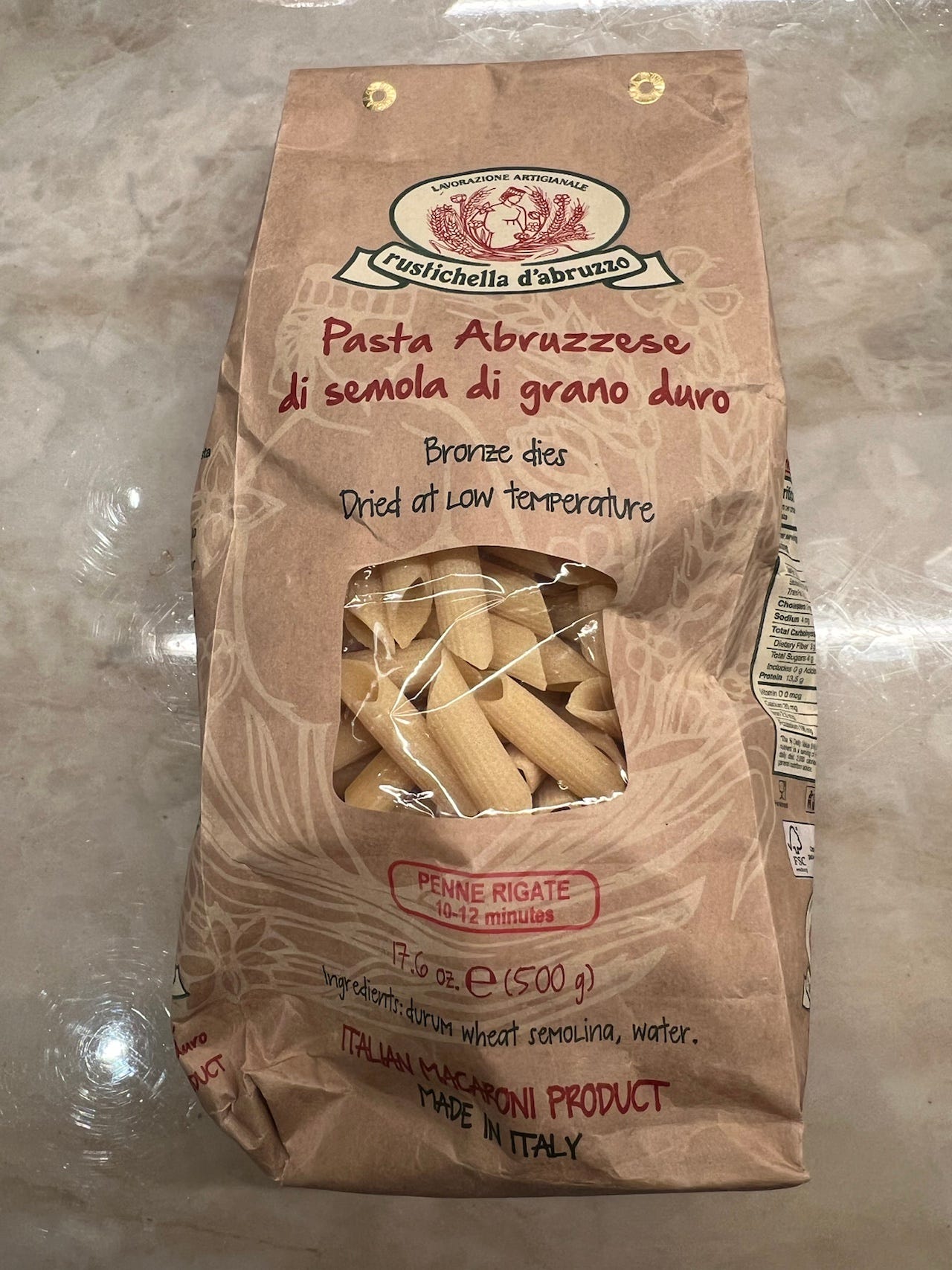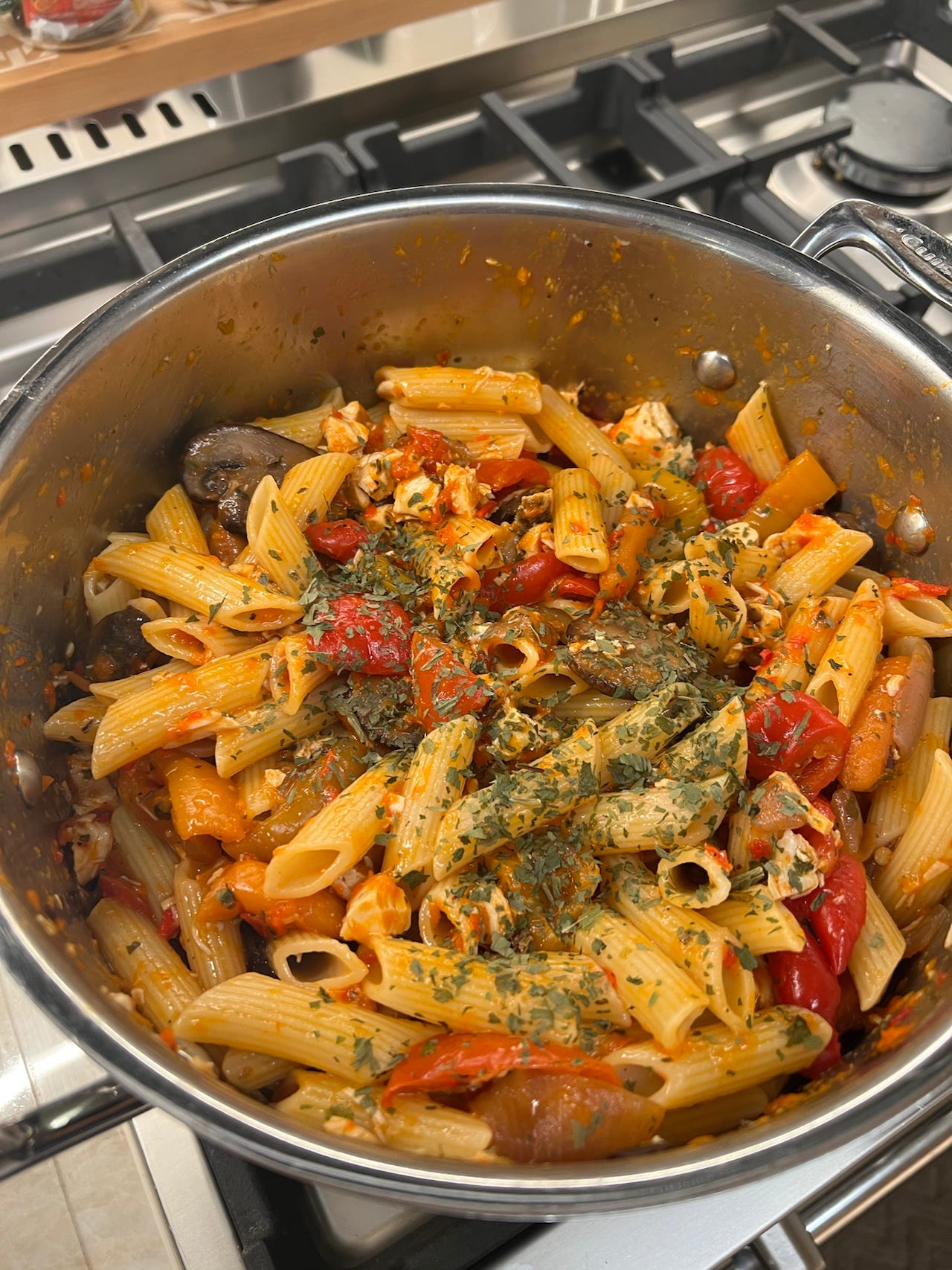Cooking with a Twist
Transforming recipes into healthier, lighter meals
I’m not a perfect cook, but I do care deeply about making a healthy meal. For me, that means one without saturated fats and other ingredients that ask too much of our bodies to process.
This viewpoint often requires creativity when looking at other people’s recipes. I have no doubt they are delicious. However, when I spot ingredients I’d prefer to avoid, I become a great improviser.
This happened to me last week. Dinner wasn’t planned, but I had prepped vegetables and proteins. Then I saw a recipe in a magazine—a “creamy” mushroom chicken pasta—and just looking at it made me hungry. It all sounded terrific until I began to analyze what exactly Phil and I would be eating. The pasta, chicken, vegetables, olive oil, and herbs were good. The butter and heavy cream were not, though I think those ingredients in another dish might be fine. And, of course, this is all personal preference. I just wanted a lighter version for us. A note on pastas—they have different nutritional value. Whole wheat has better fiber, vitamins, and mineral content than traditional white pasta.
My mind swirled with the possibilities ahead with this meal. I didn’t care that I wasn’t following it exactly. The recipe had become inspirational to make something similar but healthier. This is something a lot of home cooks do. They will adapt a recipe based on their taste, or dietary preference or simply based on the ingredients they have in the cupboard. You may even feel you do this often—I know I do.
For our version, we used durum wheat semolina pasta. Once it was done and drained, we took our left turn. Remember those Sunday veggies we stored in glass? A few of those came out, and we scooped some peppers, onions, carrots, and mushrooms into the strained pasta. The vegetables were cold but had already been seasoned with extra virgin olive oil and spices. While it would have been great to have cooked everything on the spot, we are real people with things to do, only one of which is cooking. And since the veggies had been made a few days before and stored immediately, they were still fresh.
We also had some cooked chicken, so I cut it up and tossed it in. It's the same story here—the chicken was made a day or two before, but it was still fresh and tasty. The reality is that we aim to make delicious, nutritious meals quickly.
The heat from the pasta quickly warmed everything.
But we still needed a sauce! For that, I turned to Trader Joe’s red pepper spread with eggplant and garlic. Once we stirred everything together, it looked surprisingly similar to the recipe. And this one went beyond tasting good! I was thrilled, especially because we were hungry when we got all the pieces together.
Our version focused on vegetables, was easy and fast to make, and had fewer calories and saturated fats. We avoided the rich cream-based sauce and a rigid recipe that might have kept us at the stove far longer than our version did. I was happy we chose our own path with this recipe and used the ingredients we liked.
When cooks swap out ingredients, they create their style. But when I do it, I’m simply choosing not to use the ingredients I don’t like, which is usually too much sugar or fat. Some dishes rely on these for flavor, so taste is a factor. But changing the recipe, cutting out ingredients that don’t support health and still making it taste good—that’s the North Star. It’s not easy to achieve, but we give it our best. Fortunately, this recipe was a great base and lent itself to some easy fixes in the Fischer Kitchen.
I’d love to hear about some of the recipes you’ve tweaked to your liking!







